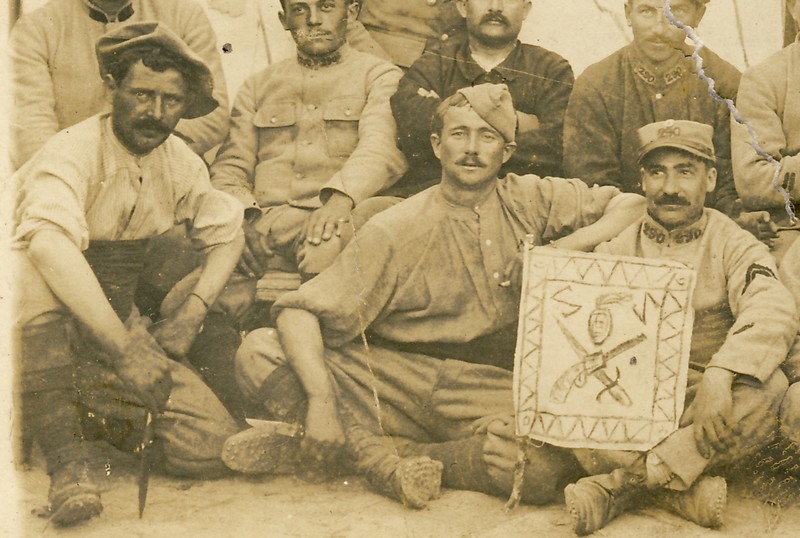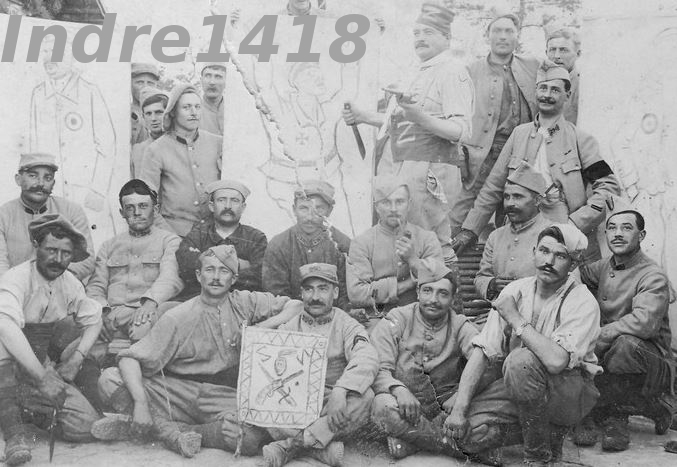- Joined
- Jun 4, 2015
- Messages
- 6,140
You're welcomeThank you for that insight.
The BladeForums.com 2024 Traditional Knife is available! Price is $250 ea (shipped within CONUS).
Order here: https://www.bladeforums.com/help/2024-traditional/
You're welcomeThank you for that insight.
 82766738_2482805518634977_8750283266101084160_n by Mark Saunders, on Flickr
82766738_2482805518634977_8750283266101084160_n by Mark Saunders, on FlickrCouteau à palme, a close up on the blade would help identify the maker?Lucky to have picked this up recently. I think it's French and would love to know more about the maker and it's age.
- Mark
82766738_2482805518634977_8750283266101084160_n by Mark Saunders, on Flickr
My current camera seems to have problems with close ups at the moment and the makers mark is very worn, but I'll see what I can do. Thank you for your response. What is your gut feeling regards age Jolipapa?Couteau à palme, a close up on the blade would help identify the maker?
Another poor photo I'm afraid. But it appears to show a mushroom shapeWhat are the symbols on the blade?
 82301923_2482918501957012_5201126926403502080_o by Mark Saunders, on Flickr
82301923_2482918501957012_5201126926403502080_o by Mark Saunders, on FlickrNontron has an interesting article on their website about this style of knife. Google “Les couteaux Nontron et la Grande Guerre”. I would buy the reproduction, but it is way too expensive, and stainless.Lucky to have picked this up recently. I think it's French and would love to know more about the maker and it's age.
- Mark
82766738_2482805518634977_8750283266101084160_n by Mark Saunders, on Flickr
These were plain hunters knives (couteau de chasse), renamed trench knives (couteau de tranchée) for the purpose, in 1914 they were given to infantry soldiers, but the number was soon unsufficient and if practical to cut bread, they were unefficient in hand to hand fights, so soldiers were later equipped with fixed kitchen knives or with the famous "Vengeur"..Nontron has an interesting article on their website about this style of knife. Google “Les couteaux Nontron et la Grande Guerre”. I would buy the reproduction, but it is way too expensive, and stainless.




Thanks a lot Tom, this looks most interesting. ☺These were plain hunters knives (couteau de chasse), renamed trench knives (couteau de tranchée) for the purpose, in 1914 they were given to infantry soldiers, but the number was soon unsufficient and if practical to cut bread, they were unefficient in hand to hand fights, so soldiers were later equipped with fixed kitchen knives or with the famous "Vengeur"..
these examples were made by the Manufacture d'Armes et Cycles de St-Etienne


a team of "trench cleaners" (Equipe SZ, 290è R.I. (section "Zigouilleurs" ) cf/https://www.tircollection.com/t32241-armes-blanches-des-nettoyeurs-de-tranchees-ww1

Rough-looking crew. I wouldn't want to see them in my trench.These were plain hunters knives (couteau de chasse), renamed trench knives (couteau de tranchée) for the purpose, in 1914 they were given to infantry soldiers, but the number was soon unsufficient and if practical to cut bread, they were unefficient in hand to hand fights, so soldiers were later equipped with fixed kitchen knives or with the famous "Vengeur"..
these examples were made by the Manufacture d'Armes et Cycles de St-Etienne


a team of "trench cleaners" (Equipe SZ, 290è R.I. (section "Zigouilleurs" ) cf/https://www.tircollection.com/t32241-armes-blanches-des-nettoyeurs-de-tranchees-ww1

I think after war, here is the complete bunch.Rough-looking crew. I wouldn't want to see them in my trench.
They look pretty perky, too. I wonder how late this was in the war.


Rough-looking crew. I wouldn't want to see them in my trench.
They look pretty perky, too. I wonder how late this was in the war.
I have been eyeballing this Catalan knife because of it seems to have some sort of shared ancestry with the early Laguiole. I’m pretty sure it is just a friction folder, though.
I went ahead and ordered one of these. It is sold as a “Gabacha” knife.No, no link with the Laguiole, even the early pattern.
Yes and no.I went ahead and ordered one of these. It is sold as a “Gabacha” knife.
From Wikipedia: Gabacho (Spanish pronunciation: [ɡaˈβatʃo]; feminine, gabacha) is a word used in the Spanish language to describe foreigners of different origins. In Spain it is used as a pejorative reference to someone French, coming from the Catalan word gavatx which translates as foreigner.!
Thanks. So basically they are calling it a “French knife”, without necessarily the pejorative connotations implied by Wikipedia. That makes me feel a little better about it...Yes and no.
The term "gabacho" is used in different countries to refer to the northern neighbor, in our case France.
